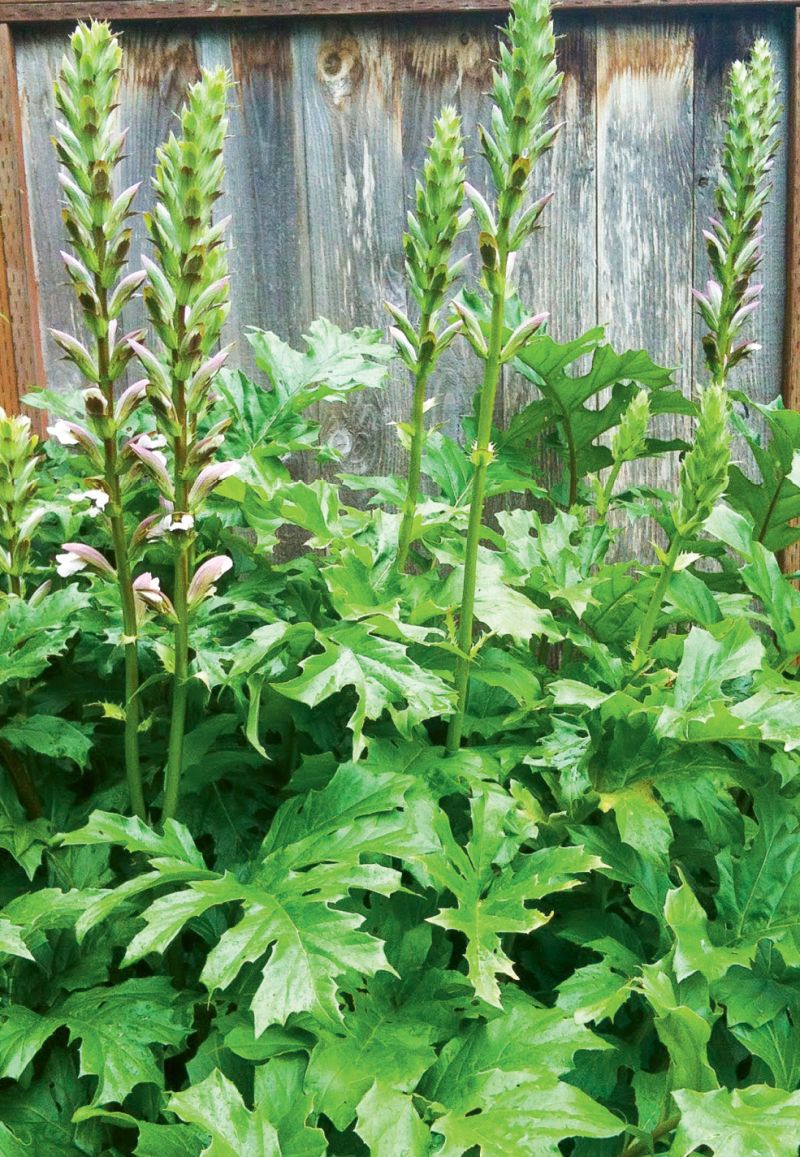
Folks often ignore the shady parts of their gardens—maybe they’re not sure what to plant or merely more interested in filling sunny beds with showy blooms. Yet these cool spots are rife with possibility. Adding layers of colors, textures, and leaf forms can help define an outdoor room, for example, or create an inviting seating area.
For partial to full shade (see sidebar), there are a variety of perennials to consider. The strawberry begonia (Saxifraga stolonifera) is a winning ground cover, as its colors—variegated silver foliage plus white blooms—are ideal for brightening dim spaces. It does best in damp areas, and because it prefers to creep along hardscape, it’s great for defining the edges of a patio.
If you’re planting on a larger scale, the giant leopard plant (Farfugium japonicum ‘Gigantea’) and bear’s breeches (Acanthus mollis ‘Oak Leaf’) deliver beautifully structured foliage and three-foot-tall bloom spikes, working well as a focal point or a backdrop in the garden bed.
Not sure what to plant under that deciduous tree? Lenten roses (Helleborus orientalis) provide blooms in late winter, when most plants are still dormant. Select a color—like purple, pink, or white—to suit your garden’s palette.
What kind of shade do you have? Here, the three main types:
Light: An area either spends two or three hours out of direct sun per day or receives a light pattern of shade all day.
Partial: The site gets up to six hours of direct sun, with four or more of those being in the morning. (If at least four of the six hours are in the afternoon, then you have full sun.)
Full: A dense, low-hanging plant canopy prevents
the ground beneath it from receiving any direct light. Selective pruning will allow more sunlight through (for the health of the trees,
this job is best done by a certified arborist).
Ask an Expert: Many of my flowers are starting to go to seed. Can I save the seeds for next year?
“Saving seeds from a favorite annual (say, sunflowers or celosia) or perennial (such as coneflowers and guara) is not only good for your budget, it lets you continue to grow less-common varieties that may not be sold locally. Look for blooms that have faded and find the seed head; once it’s brown and dry, it’s ready to harvest. While you can simply tap many seeds into a container, very small ones—like those from basil and poppy plants—may fall out into the garden while you’re harvesting. In that case, place a paper bag over the plant, cut the stem, turn the bag upside-down with the stem inside, and shake. Store seeds in labeled paper envelopes in a cool area away from light and humidity.” —Joan McDonald, garden editor
Tip: With the summer growing season winding down, it’s time to reflect upon and record what worked and what didn’t. Snap photos of your plants—this will allow you to document each one’s health and its location in the garden (especially important for crop rotation). Try uploading your images to Pinterest—it’s a great organizational tool.